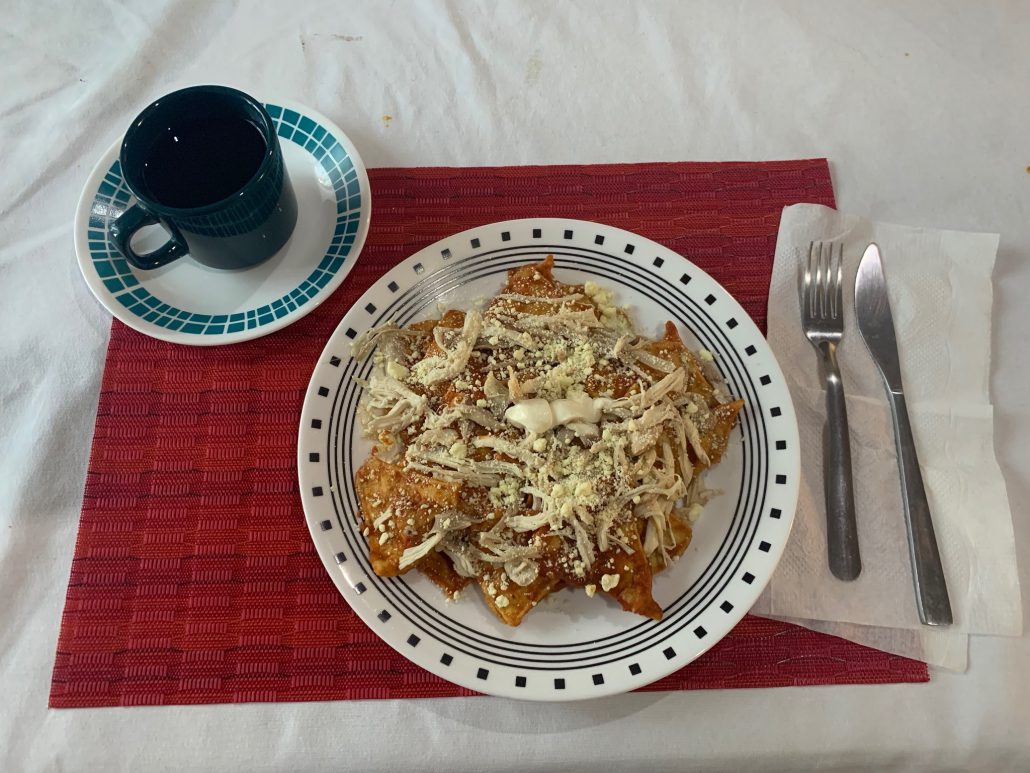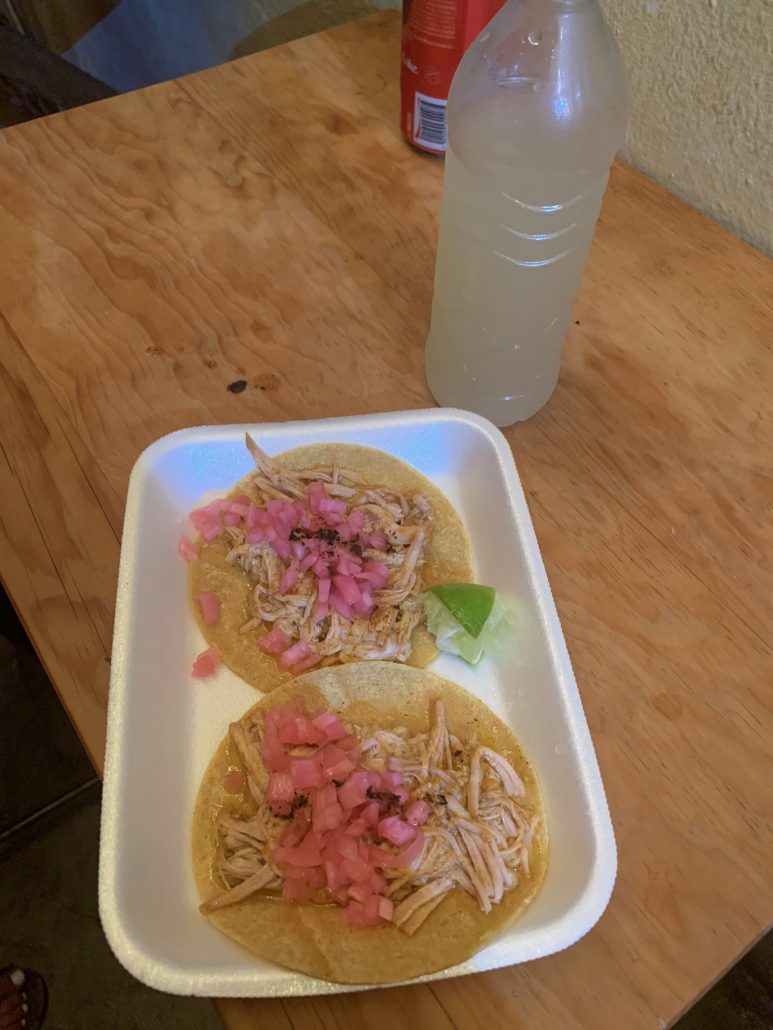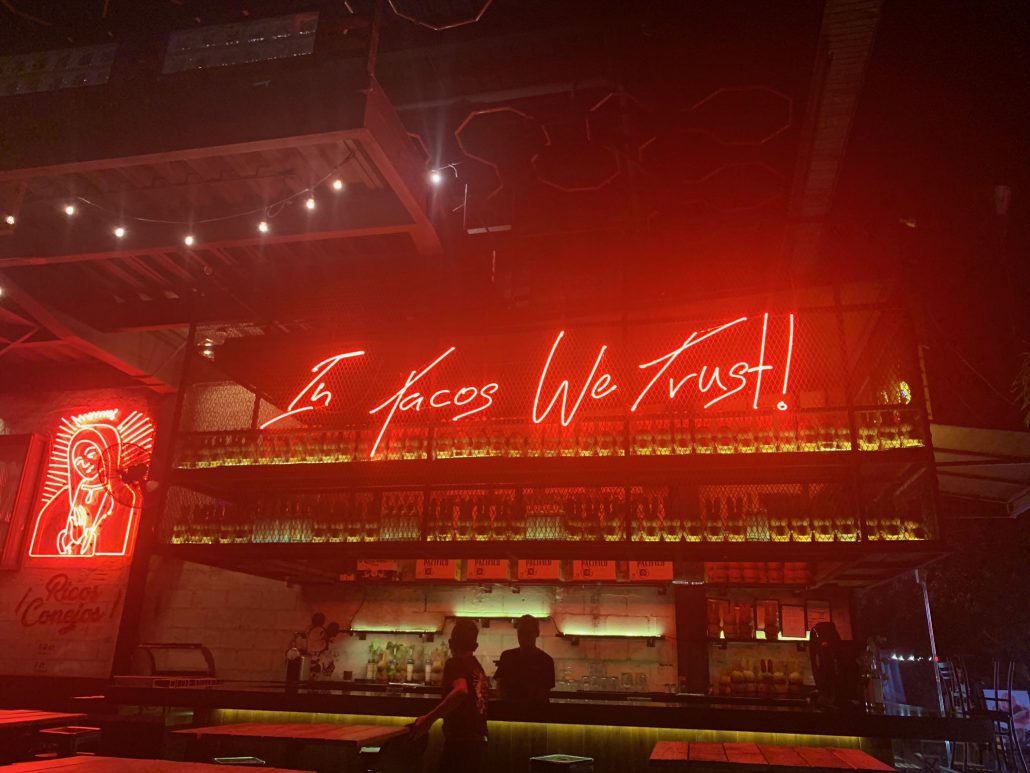By Andrea Zheng
Not going to lie, this is one of the things that I was looking forward to the most during this trip. As a big fan of Mexican food (and just food in general) I was excited to try anything and everything that the Yucatan peninsula had to offer. Because this was a homestay program, a lot of the meals that I ate during this month were made by my host mamá.
For breakfast, there were classic dishes like chilaquilas, crepes, or fruit. Our mama would also prepare a pitcher of juice for my roommates and a cup of coffee for me.

One interesting thing about Mexico is that lunch is their “heavy” meal, meaning that this is when people will typically eat the most food. This is in contrast to the US, where dinner is the heaviest meal with the most food. With so much to eat for lunch, dinner is relatively light, meaning some empanadas, toast with Nutella or jam, or something like that.
There are a few dishes that are special to the Yucatan peninsula and below are two examples, one that our mamá cooked for us and one that we prepared ourselves.
Cochinita Pibil
Cochinita pibil or “small pig under the ground” is a dish that is typically eaten on Sundays in the Yucatan peninsula. It gets its name because the Mayans would cook the meat in a small hole in the ground, placing a pot over a fire and then covering it with earth to give the meat inside a smoky flavor. The meat is then used as the protein for a variety of different dishes, like tacos or panuchos.

Panuchos
One of the days during class, we got to take a cooking class in the kitchen at our school. They showed us a variety of food that was typical to the Yucatan peninsula and then we made a dish called Panuchos.
Panuchos have a base of a deep-fried tortilla that is stuffed with a black bean paste and then topped with meat and any other toppings desired. To make these, we took a prepared dough ball and formed the traditional tortilla shape and thickness using a tortilla press. We then put this tortilla into a vat of oil, allowing the tortilla to puff up on both sides before taking it out to cool. We then topped off our creation with guacamole, pickled onion, and salsa.

The only downside that I found with food in Merida is that they don’t use a lot of vegetables in their dishes. As someone who is VERY accustomed to having at least one veggie option, if not the whole meal veggie, this was definitely an adjustment that I had to make in my diet. But there was a Walmart close by if I ever needed groceries and I could always snack on frozen mangoes (HIGHLY recommend).
When eating out, I definitely found the food to be a lot cheaper than I was used to here. One of my favorites was a little taco stand down the street that had amazing al pastor tacos for around 10 pesos, which converts to around 50 cents. Needless to say, lots of tacos were consumed during this trip.

Click HERE to see a gallery of the different types of food that I had during my time in Merida. This isn’t a comprehensive album of the food, as some dishes were consumed before I even remembered to take a picture (whoops).
Andrea Zheng studied abroad in Merida in Summer 2019. https://ieo.ucla.edu/travelstudy/Span-Mexico/



